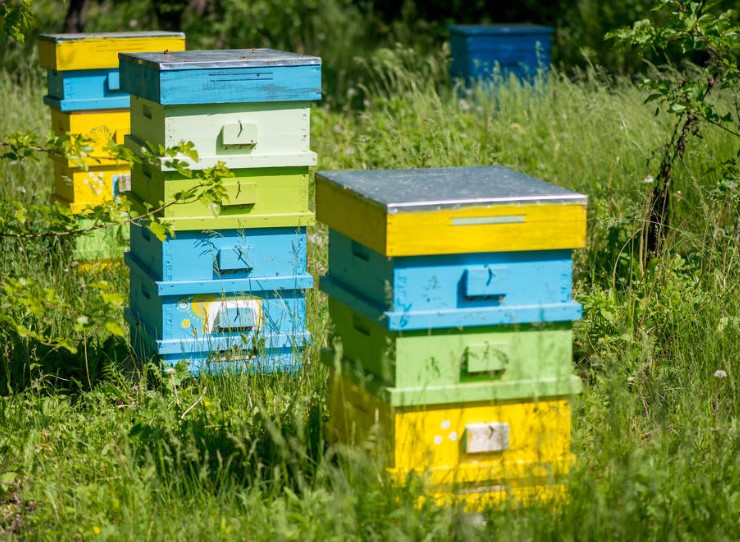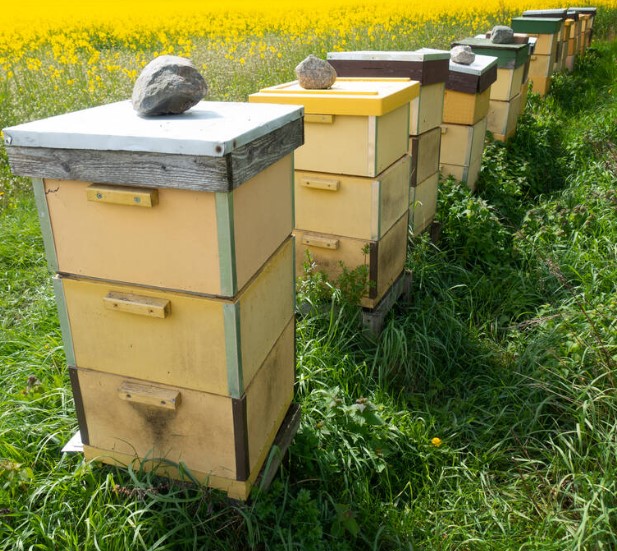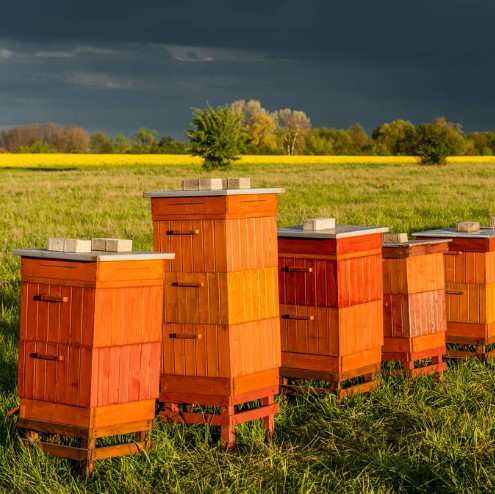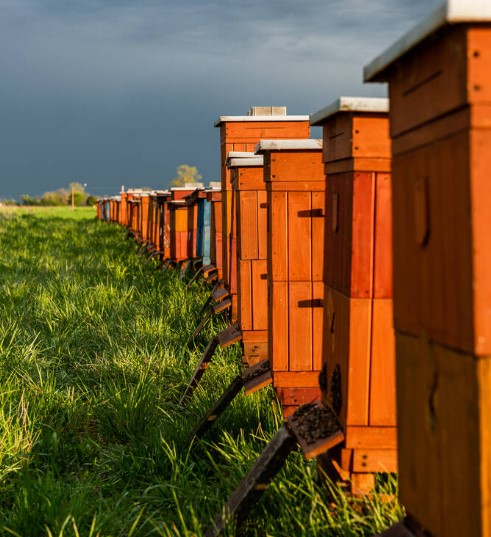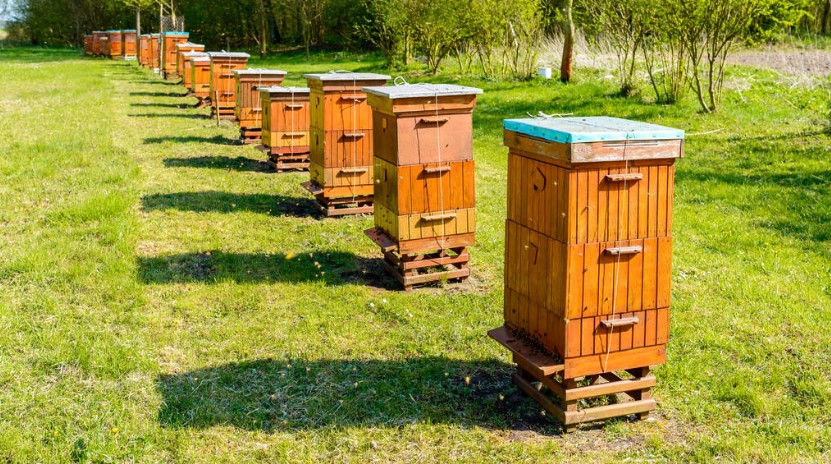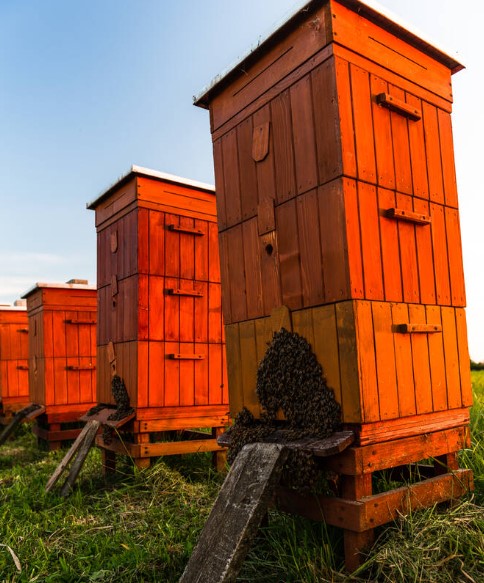Beehive Supers
Ready to maximize your honey production? Discover our durable and efficient beehive supers – Shop now and transform your beekeeping journey!
Understanding Beehive Supers: An Essential Guide for Honey Production
Table of Contents
- 1 Beehive Supers
- 1.1 Understanding Beehive Supers: An Essential Guide for Honey Production
- 1.2 Key Features About Beehive Supers
- 1.3 Definition and Purpose
- 1.4 Types of Supers
- 1.5 Construction and Materials
- 1.6 Assembly and Maintenance
- 1.7 Components
- 1.8 Placement and Usage
- 1.9 Harvesting Honey
- 1.10 Winterization
- 1.11 Common Challenges
- 1.12 Sustainability and Ecological Impact
- 1.13 Innovations and Trends
- 1.14 Best Practices
- 1.15 Conclusion
- 1.16 BEEHIVE SUPERS – FAQs
- 1.16.1 What is a beehive super?
- 1.16.2 How many supers can I put on a beehive?
- 1.16.3 What's the difference between a brood box and a super?
- 1.16.4 Do I need a queen excluder for a super?
- 1.16.5 What are the dimensions of a standard beehive super?
- 1.16.6 How do I know when to add a super to my hive?
- 1.16.7 Can I use plastic frames in a beehive super?
- 1.16.8 How do I harvest honey from a super?
- 1.16.9 What is the best time of year to add a super?
- 1.16.10 How do I prepare a super for winter?
- 1.16.11 What's the difference between a deep super and a medium super?
- 1.16.12 Should I paint my beehive super?
- 1.16.13 Can supers from different manufacturers be used together?
- 1.16.14 How often should I inspect my beehive supers?
- 1.16.15 What materials are used to make beehive supers?
- 1.16.16 How do I prevent bees from building comb between supers?
- 1.16.17 What is the purpose of a super foundation?
- 1.16.18 Can I use old supers for a new hive?
- 1.16.19 How do I clean and maintain my beehive super?
- 1.16.20 What is the best way to store empty supers?
- 1.16.21 How can I encourage bees to move up into the super?
- 1.16.22 What is honey bound, and how does it affect supers?
- 1.16.23 Can I add a super to a weak or new colony?
- 1.16.24 How does weather affect when to add or remove a super?
- 1.16.25 What are the signs that a super is ready for honey harvesting?
Beehive supers are an integral component of modern beekeeping, primarily used in the production of honey. Positioned above the brood box in a beehive, supers provide a dedicated space for bees to store their surplus honey, which beekeepers can later harvest. This separation is crucial as it allows for the collection of honey without disturbing the brood area where the queen bee lays eggs and young bees are nurtured. The supers come in various sizes, including deep, medium, and shallow, each serving different needs based on the beekeeper’s goals and the hive’s capacity. For instance, deep supers hold more honey but are heavier, while shallow supers are more manageable, especially when full.
The construction and design of beehive supers are tailored to facilitate ease of use and efficiency in honey production. Typically made from wood or plastic, these supers are designed to hold multiple frames where bees build their honeycombs. Wooden supers, while traditional, require regular maintenance such as painting to protect against the elements and prevent rot. Plastic supers, on the other hand, offer durability and ease of cleaning. Inside the super, frames with wax or plastic foundations provide a base for bees to start building their honeycomb, ensuring uniform and easily harvestable combs. The modularity of these supers also allows beekeepers to add or remove them based on the hive’s needs, contributing to effective colony management and swarm control. Proper maintenance, including routine inspections and cleaning, is vital for the health of the hive and the quality of honey produced. Beehive supers not only symbolize the harmony between beekeeping practices and the natural behavior of bees but also highlight the importance of sustainable management in modern apiculture.
Key Features About Beehive Supers
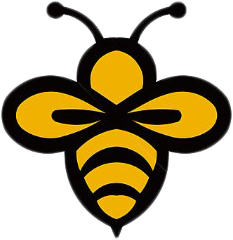
Size Variations: Available in deep, medium, and shallow sizes to suit different beekeeping practices and honey yield needs.

Material Options: Commonly made from either wood for traditional durability or plastic for ease of maintenance and longevity.

Frame Compatibility: Designed to hold multiple frames where bees build their honeycombs, with either wooden or plastic frames.

Foundation Types: Equipped with wax or plastic foundations to guide comb building by bees.

Modularity: Easily stackable on top of the brood box, allowing for expansion depending on the colony’s needs and nectar flow.

Queen Excluder Compatibility: Can be used with a queen excluder to prevent the queen from laying eggs in the honey storage area.

Harvesting Convenience: Designed for efficient honey harvesting without disturbing the brood chamber.

Insulation Properties: Wooden supers provide natural insulation, beneficial in colder climates.

Ease of Assembly: Designed for straightforward assembly, often requiring minimal tools.

Maintenance Requirements: Needs periodic maintenance such as cleaning, painting, and repairing to ensure longevity and hive health.

Pest Resistance: Can be treated or built in ways to resist common pests like wax moths.

Customization Capability: Allows for customization in terms of painting and adding additional protective layers.

Environmental Impact: Can be sourced from sustainable materials for eco-friendly beekeeping.

Honey Capacity: Different sizes offer varying capacities for honey storage, affecting the frequency of harvesting.

Adaptability to Hive Types: Compatible with various hive types, including Langstroth, Warre, and Top-Bar hives.

Ventilation Features: Some designs include ventilation options to help regulate temperature and moisture levels in the hive.

Winterization Features: Can be modified or reduced in number for winter to help bees maintain appropriate hive temperatures.

Monitoring Accessibility: Modern supers can incorporate monitoring devices for bee health and honey production tracking.

Ease of Inspection: Designed for beekeepers to easily inspect and manage without causing much disturbance to the bees.

Harvesting Efficiency: Modern designs like the Flow Hive allow for easier and more efficient honey extraction.
Definition and Purpose
Beehive Super
A box placed above the brood chamber in a beehive, primarily used for storing honey.
Purpose
To allow for the collection of surplus honey without disturbing the brood area.
Types of Supers
Deep Supers
Taller and can hold more honey, but are heavier.
Medium Supers
More manageable in terms of weight, easier to handle.
Shallow Supers
Lightest, used mainly for honey extraction.
Construction and Materials
Materials
Commonly made from wood or plastic.
- Wooden Supers: Traditional, offer better insulation but require more maintenance.
- Plastic Supers: Durable, easy to clean, and less prone to rot.
Design Variations
Can vary depending on the type of beehive, such as Langstroth, Top-Bar, or Warre hives.
Join the community of successful beekeepers by choosing our high-quality beehive supers.
Click to purchase and start reaping the sweet rewards!
Assembly and Maintenance

Assembly
Requires precise measurements to maintain proper bee space.

Maintenance
Includes painting (with non-toxic paint) to protect from the elements, cleaning old comb, and repairing damages.
Components

Frames
Where bees build comb; can be made of wood or plastic and usually contain a wax or plastic foundation.

Foundation
Provides a base for bees to build comb; available in wax or plastic.
Placement and Usage

Placement in Hive
Placed above the brood chamber, separated by a queen excluder if desired.

Timing for Addition
Added when the brood chamber is about 70-80% full or during periods of high nectar flow.
Harvesting Honey

Harvesting Process
Involves removing the super, uncapping the honeycomb, and using an extractor to remove the honey.

Timing
Best done when most of the honeycomb cells are capped.
Winterization

Reducing Supers
Typically, the number of supers is reduced for winter to help bees maintain temperature.

Insulation
May require additional insulation in colder climates.
Common Challenges

Pests and Diseases
Keeping supers clean helps prevent issues like wax moths or fungal growth.

Swarm Prevention
Proper super management can help prevent swarming due to overcrowding.
Sustainability and Ecological Impact
Sustainable Practices
Includes using responsibly sourced materials and minimizing disturbance to bees.
Impact on Bees
Proper super management ensures the health and productivity of the bee colony.
Innovations and Trends
Flow Hives
A newer type of super that allows for easier honey extraction without opening the hive.
Monitoring Systems
Technological advances have led to the development of monitoring systems for hives, including supers.
Best Practices
Regular Inspections
Essential for monitoring honey production and overall hive health.
Hygienic Practices
Keeping equipment clean to prevent the spread of diseases.
Responsible Harvesting
Ensuring that bees have enough honey left for their needs.
Conclusion
Beehive supers play a vital role in beekeeping, particularly in honey production. Understanding their types, maintenance, and proper usage is crucial for successful beekeeping. With the advancement of technology, beekeepers now have more options and tools to manage supers efficiently, making beekeeping more accessible and sustainable.
This comprehensive overview of beehive supers underscores their importance in beekeeping and highlights the need for responsible and informed management to ensure the health and productivity of bee colonies.
BEEHIVE SUPERS – FAQs
What is a beehive super?
A beehive super is a box that sits on top of the brood box in a beehive, used primarily for storing honey. It’s where bees store surplus honey that beekeepers can harvest.
How many supers can I put on a beehive?
The number of supers you can put on a beehive depends on the hive’s strength and nectar flow, but typically, 1-3 supers are common.
What's the difference between a brood box and a super?
A brood box is the part of the hive where the queen lays eggs and young bees are reared, while a super is used primarily for honey storage.
Do I need a queen excluder for a super?
A queen excluder, placed between the brood box and super, is optional but helps prevent the queen from laying eggs in the honey storage area.
What are the dimensions of a standard beehive super?
Standard dimensions vary, but a typical Langstroth super is about 19 7/8″ long, 16 1/4″ wide, and 6 5/8″ high.
How do I know when to add a super to my hive?
Add a super when the brood box is 70-80% full, indicating that the colony needs more space for honey storage.
Can I use plastic frames in a beehive super?
Yes, plastic frames can be used in a beehive super and are popular due to their durability and ease of maintenance.
How do I harvest honey from a super?
Honey is harvested by removing the super, uncapping the honeycomb cells, and using a honey extractor to spin out the honey.
What is the best time of year to add a super?
The best time to add a super is during the spring or early summer when nectar flow is high and bees are actively foraging.
How do I prepare a super for winter?
For winter, reduce the number of supers, ensure adequate food stores, and provide insulation if necessary.
What's the difference between a deep super and a medium super?
Deep supers are taller and hold more honey, while medium supers are shorter, lighter, and easier to handle.
Should I paint my beehive super?
Painting a beehive super is recommended to protect it from the elements, but use non-toxic, water-based paint.
Can supers from different manufacturers be used together?
Yes, as long as the dimensions are compatible, supers from different manufacturers can be used together.
How often should I inspect my beehive supers?
Beehive supers should be inspected every 7-10 days during the active season to check for honey storage and overall health.
What materials are used to make beehive supers?
Beehive supers are commonly made from wood or plastic, each with its own benefits and maintenance requirements.
How do I prevent bees from building comb between supers?
Proper bee space and regular inspections can prevent bees from building comb between supers.
What is the purpose of a super foundation?
A super foundation provides a base where bees can start building their honeycomb, ensuring uniform and easy-to-harvest honeycombs.
Can I use old supers for a new hive?
Yes, old supers can be used for a new hive after ensuring they are clean and free from disease.
How do I clean and maintain my beehive super?
Clean and maintain your beehive super by scraping off excess wax, repairing any damage, and storing it in a dry place to prevent mold and rot.
What is the best way to store empty supers?
Store empty supers in a dry, ventilated area, stacked with mothballs or Para-dichlorobenzene to prevent wax moth infestations.
How can I encourage bees to move up into the super?
Encourage bees to move into the super by ensuring it’s well-ventilated, adding drawn comb, and placing it close to the brood box.
What is honey bound, and how does it affect supers?
Honey bound occurs when bees fill the brood box with honey, leaving no space for the queen to lay eggs, and can be managed by adding or rearranging supers.
Can I add a super to a weak or new colony?
It’s best to wait until a new or weak colony strengthens and fills most of the brood box before adding a super.
How does weather affect when to add or remove a super?
Weather affects nectar flow; add supers during warm, nectar-rich periods and remove them when nectar flow decreases or in preparation for winter.
What are the signs that a super is ready for honey harvesting?
A super is ready for harvesting when most of the honeycomb cells are capped, indicating the honey is ripe and has the right moisture content.

